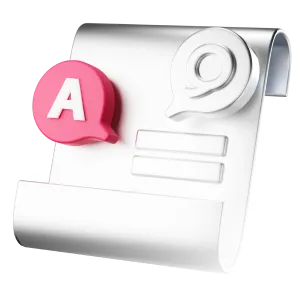How much does it cost to replace a timing belt?
Replacing a timing belt will cost $100 to $350 for a kit with necessary parts, plus about three to five hours of a mechanic’s labor. So, a total of about $400 to $1,000.
Experts recommend replacing the water pump at the same time, which will cost about $100 more.
It’s important to have a timing belt in good working order, because a broken one can be catastrophic.
What is a timing belt?
The timing belt (sometimes called a “cambelt”) is a rubber strap with “teeth” on it that ensures the functions of the engine happen at precisely the correct time.
Most gasoline-powered cars operate on a four-stroke combustion cycle. In each cylinder of the engine, a piston starts at its topmost position, an intake valve opens briefly, and the piston goes downward to let the engine take air and gasoline into the cylinder. That’s called the intake stroke.
Then, the piston moves upward to compress the mix of fuel and air, while valves stay closed. That’s called the compression stroke. Then, during the combustion stroke, the piston reaches the top again and a spark plug ignites an explosion, which pushes the piston down again. Then, during the exhaust stroke, the piston hits the bottom and an exhaust valve opens briefly, sending exhaust out of the engine and down the tailpipe.
This cycle repeats hundreds of times per minute. The activity is driven by the crankshaft, which rotates to move the pistons up and down, and the camshaft, which controls the opening and closing of the valves. (RPM — revolutions per minute — measures how many times the engine’s crankshaft makes one full rotation every minute.)
The camshaft turns at one-half the rate of the crankshaft, but the timing belt keeps all the components in sync, so the pistons move up and down and the valves open and close at precisely the correct times. The timing belt also drives the engine’s water pump.
Note:Some cars use a metal timing chain rather than a rubber timing belt. Timing chains last longer but need constant lubrication and can cause more severe damage if they fail.
When should I replace the timing belt on my car?
You should replace a timing belt before it breaks, but it’s hard to know when it’s deteriorated. You might hear a ticking noise when it’s wearing down, or if it’s broken, you might hear the starter, but with no belt to drive the crankshaft, the engine won’t actually start.
Therefore, you should follow your car manufacturer’s recommendation for how often to replace a timing belt, usually between 70,000 and 90,000 miles.
Timing belts are made of rubber and degrade over time. If one degrades so badly that it snaps and breaks while you’re driving, the car will suddenly die. That could cause an accident.
It could also cause major damage to your engine. If a timing belt breaks, the crankshaft will continue to spin, but the camshaft will stop. Pistons will continue to move up and down, and could smash the valves and damage the cylinders. Repair costs could exceed the value of the vehicle.
Experts recommend replacing the water pump when you replace the timing belt, so that both wear at the same rate.
Can I replace a timing belt myself?
Replacing a timing belt is a serious undertaking, and you can cause damage to your engine if you make a mistake. Unless you have excellent automotive repair abilities, this job is probably best left to a professional mechanic.

Deirdra Funcheon is a journalist with a master`s degree from Boston University and more than 20 years of experience covering a broad range of topics. She has worked at Univision (on the investigative team at Fusion), Axios (where she covered Miami-area news) and Bisnow (covering the commercial real estate industry). At Jerry, she aims to empower drivers with knowledge about how their vehicles work and how best to handle repairs, insurance and other complications of car ownership.

Phil Metzger is a personal finance editor and writer with more than 30 years of experience editing and writing content across a variety of industries. In writing and editing for Jerry, Phil’s mission is to help car owners better understand their vehicles and the costs associated with car ownership. Before joining Jerry, Phil worked as a writer and editor for newspapers, magazines, television radio and online news. His work has appeared in many major publications and websites over the years, including a series he edited that was a finalist for a Pulitzer Prize.








